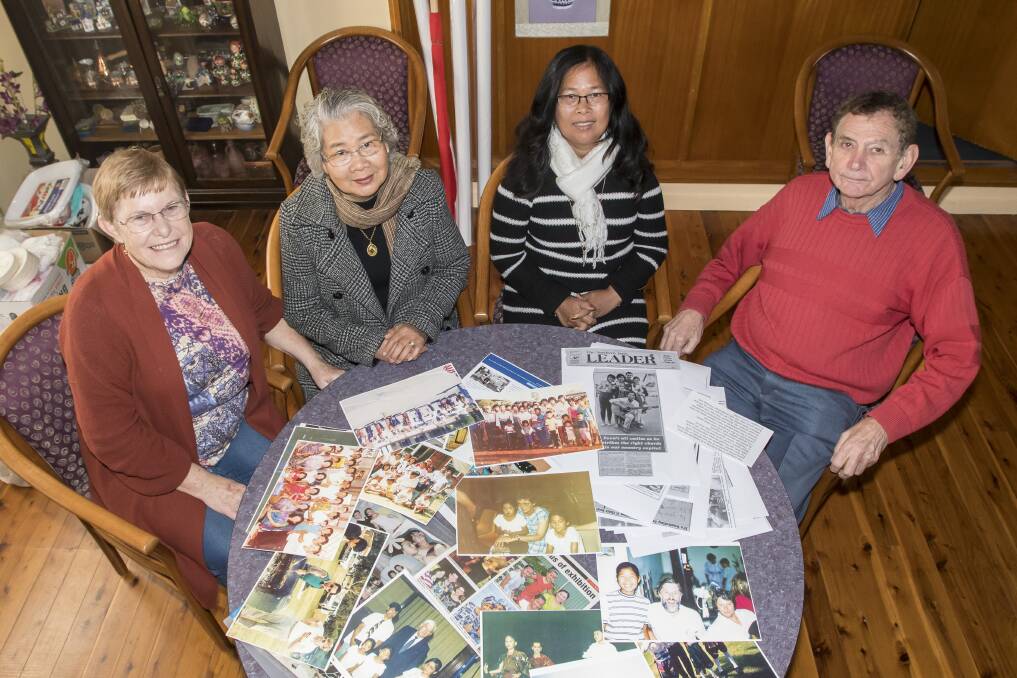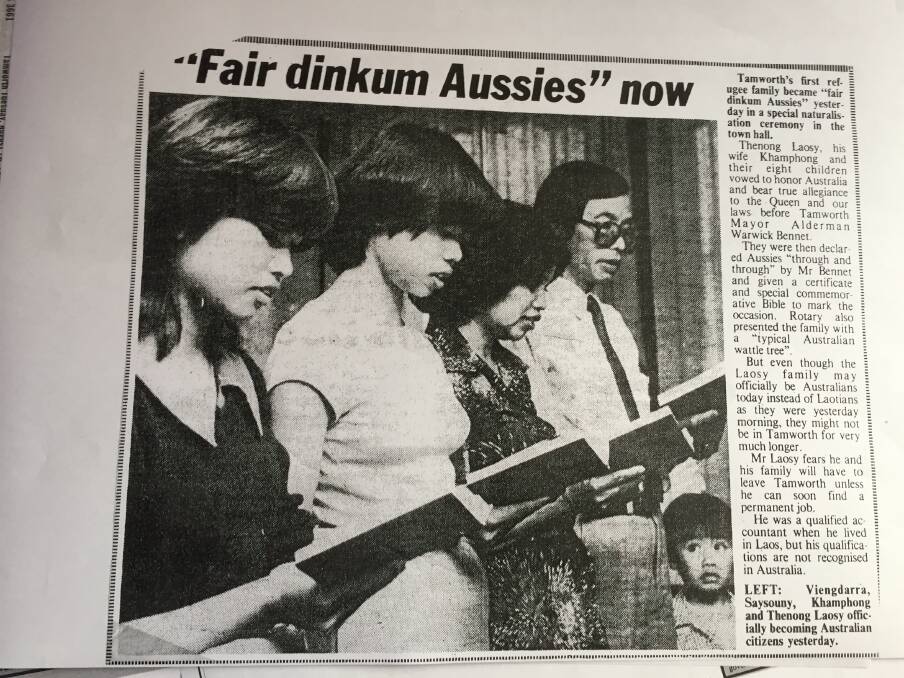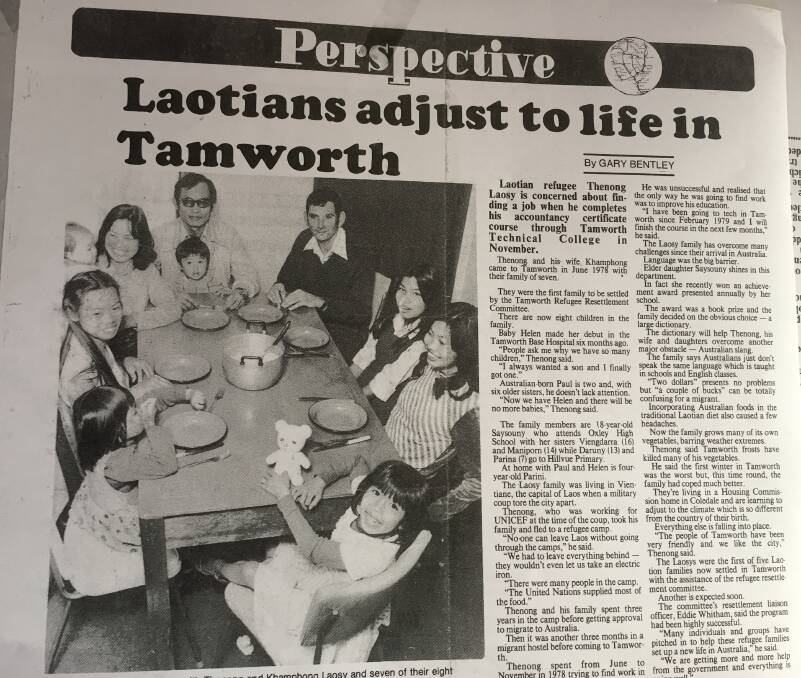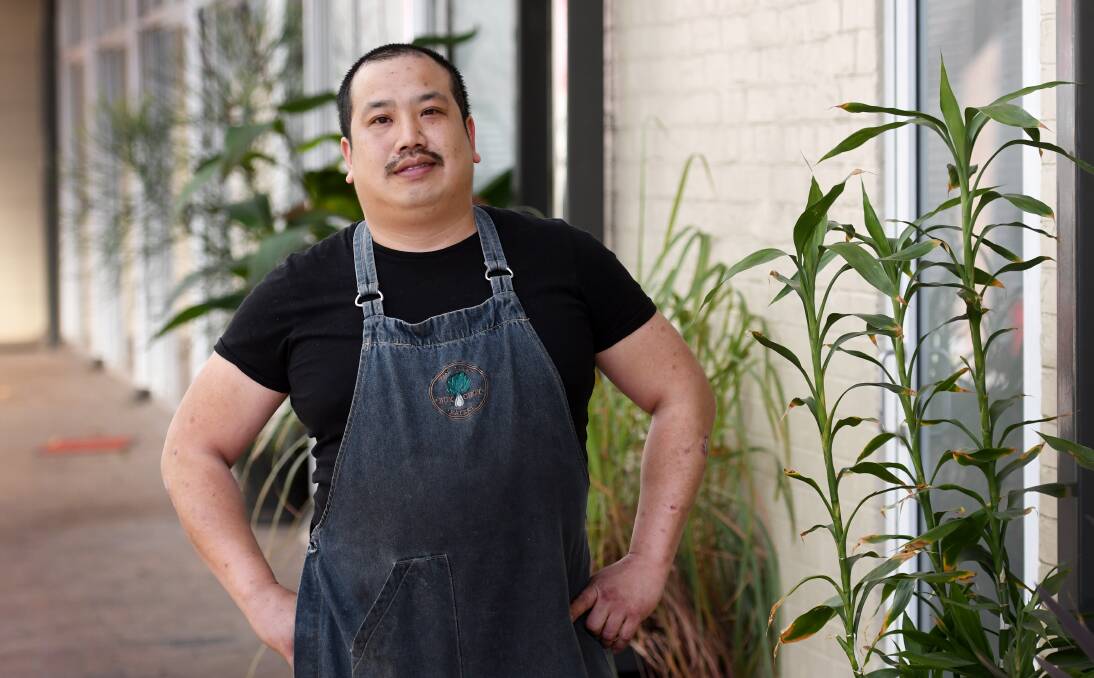
NUANLAONG Phan Vongsa struggles to find the English word to compare Tamworth to her native Laos.
Subscribe now for unlimited access.
$0/
(min cost $0)
or signup to continue reading
“Opposite,” she eventually proffers.
She escaped Laos with her three children, huddled in a canoe in 1984.
With 200 baht in her pocket, about $10 Australian dollars in today’s money she says, and some clothes in a sack, her family braved the waters of the Mekong River to escape to Thailand.
This treacherous trek came after a six year stint in a Lao labour camp, where her husband remained until 1987.
One would hope “opposite” was a pretty fair summation of life in Tamworth.
Only before spending two years in a Thai refugee camp, did she come to call Tamworth home in April 1986 after being sponsored by her brother.
She knew nothing of Australia, not even what language was spoken.
“My brother, he went to the US twice and he said ‘come to Australia’,” she said.
“It’s the good country, good people.
“Freedom.”
A starting point

In 1978, the Tamworth community embraced a new concept.
The city reached out to receive Lao refugees straight from the camps in Thailand.
It started with eight families, many of whom laid down roots in Tamworth with subsequent children and grandchildren making a life for themselves here.
This weekend, the more than 120 people from the Lao-Tamworth community will come together to celebrate the fortieth anniversary of this settlement.
While it’s a festivity for the local Lao community, for Multicultural Tamworth chairman Eddie Whitham it commemorates the starting point for a number of phenomenons.
Since 1978, Tamworth has become home to more than 80 nationalities, including displaced people from Burma, Cambodia, Sudan and Rohingya, but it all begun with the Lao initiative.
“The Lao people are important because they are the first settlement here after the Chinese and Europeans,” he said.
“They came here as a totally different group of people, straight from war, straight here from nothing.
“Those families settled here, some have died, some have moved on.
“On Saturday night, they’ll come from Yepoon in Queensland, Canberra, Sydney, Central Coast to be here.”
There’s a particular sense of pride in this celebration for Mr Whitham whose family has helped countless refugees and migrants set up new lives in Tamworth.
When The Leader arrived at Mr Whitham’s home, he burst out of his front door waving an old Lao flag and proclaimed “welcome to the land of one million elephants”.
For Mr Whitham, it’s about making a statement which can override the contretemps in local history.
“It’s a public statement to say our community has helped families for 40 years, we’re thanking them and the people who helped them and their contribution to our community,” he said.
“They’re here now, they’ve settled.
“Ten years ago, there was all this noise about the Sudanese, that was a hiccup badly handled by government and the council.
“This is to say we’ve been settling for 40 years.”
A working relationship

The Lao people who came to call Tamworth home were “ traumatised” and “dispossessed”, Mr Whitham said.
Despite the tumult of a war-torn country, refugee and labour camps, a strong work ethic shone through.
Souvanny Sayabath has raised six children in Tamworth since making the move in the early 1980s.
Including stints chipping cotton and collecting eggs, Souvanny said she just couldn’t stay still.
“I used to be a hard worker,” she said.
“In the [refugee] camp, we had to do everything.
“When I came here … that’s why I said it’s not that hard, I can do anything.”
While she wasn’t afraid of hard work, she encouraged her children to study and go to university, which they did.
“That’s why I pushed my kids to study.

“You can be anything in Australia, because government helps you be everything,” she said.
This weekend’s celebration will be a special one for her as well.
“It’s good because, we have come from nothing and now we have got something and we can celebrate,” she said.
“We’re thankful for Australia to give us a chance.”
Through work, Narong Sayabath and his mother have been able to give back to Tamworth, served-up Lao style.

Narong runs his restaurant Buk Choy on Brisbane Street while his “old girl has got the business over at Centrepoint”, My Thai.
“We have fun doing restaurants, more than anything, getting to give back our style of cooking,” he said.
Narong’s family came to Tamworth 33 years ago after being sponsored by the St Peter’s church and haven’t looked back.
“It’s just a really good community that kept us here, we haven’t really found a problem here.”
He said Tamworth had been quite welcoming for his family, and other Laotians, and made particular mention of the Aboriginal community.
“I’ve become good friends with a lot of the community around there,” he said.
“It’s been pretty good all around Tamworth, not just the church groups that have been accepting.”


